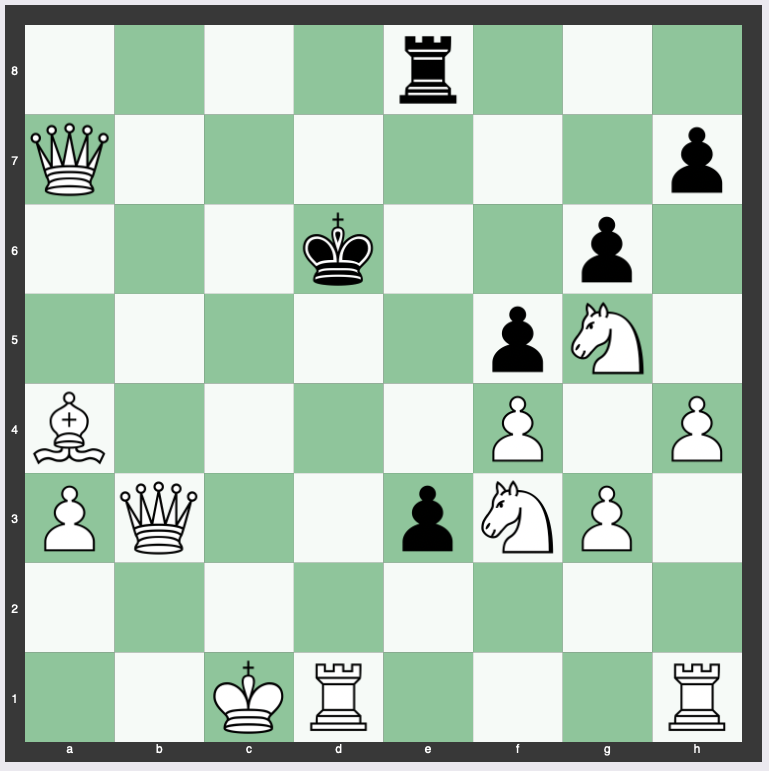Unlike the standard chess motifs, like back rank mates, the castling checkmate involves using the castling move as a decisive tactic to checkmate the opponent.
The move can be played when placing the rook on d1 or f1 is a mating move, while simultaneously involving castling a previous uncastled king.
A Closer Look at Castling
Castling, a unique chess move, permits the king and one of the rooks to move simultaneously.
This move takes place under a few specific conditions: no pieces stand between the king and rook, neither piece has moved previously in the game, the king is not in check, and the squares that the king crosses are not attacked by an opponent’s piece.
This move commonly serves to shield the king, but in our context, it astonishingly becomes a tool to declare checkmate.
Unveiling the Castling Checkmate
The term “Castling Checkmate” might perplex many, given that castling predominantly associates with king safety and rook mobilization, not aggressive play.
However, scenarios occur, albeit rarely, where this very move unexpectedly checks and mates the adversary.
In this niche circumstance, while one player castles, the rook involved directly delivers check, and consequently checkmate, to the opponent’s king.
Mechanism Behind a Successful Execution
To attain a castling checkmate, several factors necessitate alignment, chiefly revolving around the opponent’s king and rook’s positions.
The enemy king must be positioned such that after castling, your rook checks the king while it cannot move, be shielded, or capture the checking piece.
In the face of such stark limitations, the opposing king finds itself in a smothering mate, sealed by a typically defensive move.
Example of a Castling Checkmate
Below is an example of a position where castling checkmate is possible.

You can also checkmate with the knight.

But you can also checkmate by moving the rook to d1.
If the white king hasn’t castled in this case, the checkmate can be achieved via O-O-O# in this case.

Analyzing its Rarity and Strategic Implications
The scarcity of the castling checkmate emanates from its stringent prerequisites.
It demands meticulous positioning, the opponent’s neglect of an impending threat, and a uniquely convenient circumstance.
In most games, threats approaching the king are neutralized promptly, making it an improbable checkmate to encounter, especially in games among seasoned players.
In an overarching strategic sense, while aiming for a castling checkmate can sprinkle an element of surprise, it may not be a wise game plan to intentionally seek from the onset.
The astuteness of chess involves maintaining a fluidity in strategy, adapting to the unfolding board, and capitalizing on opportune moments without being anchored to a specific checkmating pattern.
Conclusion
Checkmating by castling neatly intertwines defensive and offensive plays into a single move, embodying the multifaceted nature of chess strategies.
It serves as a compelling reminder that every move on the chessboard, regardless of its conventional application, can be reimagined and reapplied innovatively under suitable conditions.
While castling typically shrouds the king in safety, when the stars align, it may morph into a checkmating weapon.
Related
- Pawn Checkmate
- Rook and Pawn Checkmate
- Queen and Pawn Checkmate
- Queen and King Checkmate
- Knight and Bishop Checkmate
- Knight and Pawn Checkmate
- Rook and King Checkmate
- Bishop and King vs. King
- Two Knights Checkmate
- Bishop and Pawn Checkmate
- Knight and Bishop Checkmate
- Queen and Bishop Checkmate
- Rook and Bishop Checkmate
- Queen vs. Rook Endgame
- Back-Rank Mate
- Smothered Mate (Philidor Mate)
- 2-Move Checkmate
- 3-Move Checkmate
- 4-Move Checkmate
- 5-Move Checkmate


